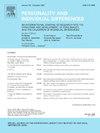谁是创新者?生活史、人口统计学、冒险倾向、注意力缺陷和多动症状与自我感觉的创新能力有何关联?
IF 3.5
2区 心理学
Q1 PSYCHOLOGY, SOCIAL
引用次数: 0
摘要
勾勒出一个社会体系中更容易接受新行为或新思想的个体特征,对于理解文化变革至关重要。为了将创新性理解为一种人格特质,我们编制了一个简短的自我报告量表,该量表由两个因素组成,分别是 "尝试新事物的意愿 "和 "创造力或独创性":愿意尝试新事物 "和 "创造性或独创性"。本研究探讨了自我报告的生活史、人口统计学、冒险倾向以及注意力缺陷和多动症征兆/症状与自我感觉的创新性之间的关系。我们的研究结果表明,定义创新者特征的特征(即那些报告自我感觉创新性水平较高的人)包括年龄(对 18 至 50 岁的人的创新性有积极的预测作用)、女性(出生时的性别分配)、非二元身份、兄弟姐妹和子女较少以及处于承诺关系中(而非单身)。此外,自我报告的社交和娱乐冒险倾向较高,而道德冒险倾向较低,这与自我认知的创新性较高有关。最后,自我报告的注意力不集中与自我认知的创新性呈负相关。本文章由计算机程序翻译,如有差异,请以英文原文为准。
Who is the innovator? How do life-history, demographics, risk-taking propensity, and attention deficit and hyperactivity symptoms correlate with self-perceived innovativeness
Outlining the profile of individuals more receptive to novel behaviors or ideas within a social system is crucial for understanding cultural change. In the pursuit of understanding innovativeness as a personality trait, efforts have produced a short self-report scale that yields an innovativeness score composed of two factors: ‘willingness to try new things’ and ‘creativity or originality.’ This study examines how self-reported measures of life-history, demographics, risk-taking propensity and attention deficit and hyperactivity signs/symptoms are associated with self-perceived innovativeness. Our findings indicate that the characteristics defining an innovator profile — that is, those reporting higher levels of self-perceived innovativeness —include age, which positively predicts innovativeness among individuals aged 18 to 50, being female (sex assigned at birth), identifying as non-binary, having fewer siblings and children, and being in a committed relationship (rather than single). Moreover, higher propensity for self-reported social and recreational risk-taking, and a low propensity for ethical risk-taking, is associated to higher self-perceived innovativeness. Lastly, self-reported inattentiveness is negatively associated with self-perceived innovativeness.
求助全文
通过发布文献求助,成功后即可免费获取论文全文。
去求助
来源期刊

Personality and Individual Differences
PSYCHOLOGY, SOCIAL-
CiteScore
8.50
自引率
4.70%
发文量
577
审稿时长
41 days
期刊介绍:
Personality and Individual Differences is devoted to the publication of articles (experimental, theoretical, review) which aim to integrate as far as possible the major factors of personality with empirical paradigms from experimental, physiological, animal, clinical, educational, criminological or industrial psychology or to seek an explanation for the causes and major determinants of individual differences in concepts derived from these disciplines. The editors are concerned with both genetic and environmental causes, and they are particularly interested in possible interaction effects.
 求助内容:
求助内容: 应助结果提醒方式:
应助结果提醒方式:


